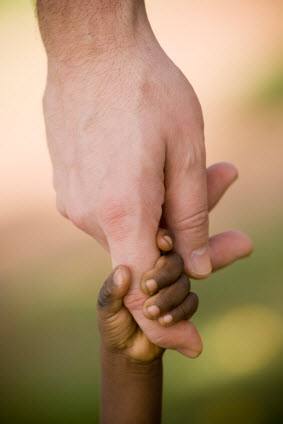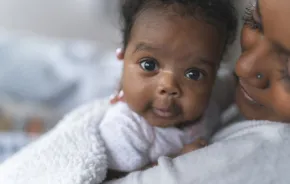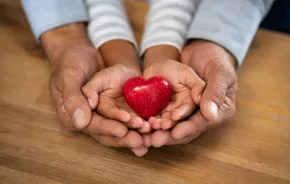 As we say at ParentMap, parenting is a trip. It’s a journey that can include many paths to parenthood. One option that seems to exist under the radar is foster parenting. The Washington foster care system is in desperate need of foster parents. On any given day there are children standing in social workers’ offices, waiting for placement. Foster parents are few and far between. Deciding to become a foster parent isn’t easy, but doing so is rewarding, and it can even lead to adoption.
As we say at ParentMap, parenting is a trip. It’s a journey that can include many paths to parenthood. One option that seems to exist under the radar is foster parenting. The Washington foster care system is in desperate need of foster parents. On any given day there are children standing in social workers’ offices, waiting for placement. Foster parents are few and far between. Deciding to become a foster parent isn’t easy, but doing so is rewarding, and it can even lead to adoption.
Making the decision
For some, becoming a foster parent is a calling. “I’m a teacher, and every time I turned around, I was working with families that had foster children or adopted foster children, or I’d hear about it on the radio or at church or from friends,” says Shari Carragher of Port Orchard. “Everyone around me was talking about foster parenting. My husband was asking about it. I was wrestling with my conscience about looking into it. One day my 6-year-old daughter said, ‘Everyone else is doing it, why can’t we?’ I said, ‘Okay, God, I get it.’” Carragher currently has two children she adopted from foster care and three foster children. She’s working on adopting one of her foster children.
Christina Kindt of Tacoma, who has foster-parented 13 children and adopted two — working on a third — has a different story. “When we were 28 or 29, my husband and I started pursuing adoption, but we weren’t ready to be foster parents. We got our license in 2006 when one of my Girl Scouts went into foster care. We had done the training, and when we found out about her, we completed the process to have her and her siblings placed with us.”
Starting the process: Licensing
The first step in becoming a foster parent is an inquiry, either to the state Department of Social and Health Services (DSHS) or a private agency (Youth for Christ; Olive Crest). “We do a 15-minute phone screen to see whether it looks like you’ll qualify,” says Anne McCoy, licensing specialist at the Youth for Christ agency in Tacoma. “If we feel that you can be licensed, we send a packet that asks for a huge amount of information. It’s a lot of work for a family, but every family does it.”
The next step is for parents (married, single or otherwise) to take a four-day, 32-hour PRIDE class (Parents Resources for Information, Development, Education) offered by the state, and they must submit their information packet by the time they finish the class. The state will commence a background check on the family, which takes one to two months.
Ducks in a row: Home study
Once the background check comes through and all paperwork is examined, a social worker will start a home study, which is conducted to ensure that the home meets safety criteria. “She looks for fire exits, smoke detectors; shows parents how to store medications properly; makes sure that alcohol is locked up or if the fireplace has a screen. There are different requirements for different ages of kids,” says McCoy.
The social worker will make three visits to the prospective home, and will make sure that parents correct any conditions that don’t comply with the state’s criteria. Once the visits are done, the social worker writes a lengthy report, the licensor reviews it and sends it to the state. The state conducts its own review and determines whether it will give the family a license. Families looking for help during licensing can contact Fostering Together.
Placement
Once a family is licensed, parents work with placement specialists to determine the family’s preferences and limitations. Families can request a certain age range, sex, indicate any racial preference, and can list their limitations, for example, a family may not want to foster a child who has behavior problems.
The majority of foster children aren’t “problem children,” according to Teri Stanford, foster parent and Support Group Facilitator at Olive Crest, a support organization for foster parents. “The majority are traumatized, which can lead to having problems. When they don’t have the language skills to say what’s wrong, it comes out in behavior, but they don’t all have behavior issues. The moment they get into foster care can make or break how they turn out,” she says.
Once a child who matches the family’s preferences becomes available, placement specialists will call the family, tell them about the child and ask whether the family will accept him or her. “If you say ‘this kid doesn’t seem to match our family,’ it’s okay with us,” says McCoy. “We don’t give up on you. We want what’s best for the kiddo and the family.”
Welcoming a child into your home
When a child became available to the Carraghers, “The social worker would call and give us his background, a picture of the little person and a lot more information. Then she’d want an answer in two hours. When she sent the picture, you were done. My husband and I had a policy that if we were asked to take a child in, we’d accept, because we believed that the child was meant to be with us for a reason. We’ve been blessed with some amazing kids.”
Bringing a child home is a very emotional experience. “When we started off, everything was brand-new. We didn’t know what to expect,” says Kindt. “There was a lot of worry and uncertainty — kind of scary emotions that I didn’t expect to have — fear, anger. I didn’t realize how birth parents can want and love their children and addictions can keep the parents from their love. There was the frustration of trying to change the birth parents. Now I make friends with the birth parents and try to mentor them. We bring up birth mommies a lot. It’s okay. It’s a part of the kids’ history.”
For many foster families, one child leads to another and foster parenting often leads to adoption. Carragher has fostered five children and adopted two, with another adoption in progress. Kindt has fostered 13 children and adopted two, going on three, since she started in 2006. Stanford has fostered numerous children of all ages.
Not all endings are happy. “We’ve had kids taken to homeless shelters on their 18th birthday,” says Stanford. “It’s very sad. It’s a broken system. We have teens with mental health issues who didn’t get into the system or went bouncing around because somebody didn’t understand them. Their behavior got worse and worse and they wound up homeless or in the penal system.”
The foster care system needs more homes for teens up to age 21 — 18-year-olds can sign themselves back into foster care until they’re 21. “Teens are good for empty-nesters,” says Stanford. “There are children out there who just want to go to school and need a place to live to do that. They don’t need daycare. They’re self-sufficient. Some get lucky and make it through but the odds are stacked against them. If we don’t do something about these kids, we just keep paying out taxes to help them instead of making them productive members of society. We need people. We need warm bodies. We need homes for them.”
Ongoing support for foster parents
As with any parenting endeavor, having the right support is key. The good news is that all kinds of support is available to foster families. Youth for Christ holds monthly dinner meetings, with childcare, for foster families to connect with each other. Social workers visit once a month to ensure that children are receiving proper care and services. “The state is really good about services,” says Carragher. Social workers focus on the child and will help him cope with issues like a birth parent’s drug use.
The state runs free ongoing classes — in person and online — for foster parents, covering a range of issues. Parents find support in the classes and they are required to complete a certain number of class hours each year. “There are all kinds of classes available. There’s no reason not to find things out because it’s all out there for you,” says Stanford.
Kindt built an extensive support network of family and friends and attends an annual moms’ retreat for adoptive and foster mothers. “It’s really recharging because all of us have the same kind of stories,” she says. “My story’s different than hers but we can relate in ways our other friends don’t understand. It’s a different kind of bond.”
A path to adoption
The goal for most foster children is to return them to their biological families, but if children are legally freed they become available for adoption. Circumstances vary, but much of the time, agencies have some idea whether a child will be freed for adoption.
“We brought home our oldest daughter from the hospital knowing that we were going to get to adopt her,” says Kindt. “She was unique. Her birth parents relinquished their rights at the hospital.”
“Our second daughter came to us at eight months and during her first week with us, I held my heart at a distance, because we were told she was moving to her biological grandma’s house. Her grandma was retired with grown kids and was taking care of two of my daughter’s siblings. We learned she didn’t want to take her. I can’t blame her for not wanting to have a third kid,” she says. “We had her for five months until her biological parents disappeared and that’s when we started to really fall in love. When your heart gets open to adoption, it just gets different. It’s not that you didn’t love them already, but the investment is so much more.”
“We fostered my daughter since she was five-and-a-half weeks old and adopted her when she was two-and-a-half,” says Carragher. “My son was placed with us at 18 months. We adopted him the same day as my daughter. He was 3. We had another foster daughter who we got at 24 hours old. We had her for nine months. She was adopted by her relatives. You become so emotionally connected. It’s not for the faint of heart.”
Going back home
The state works to send kids back to their birth families to give them a sense of belonging. “There have been a lot of studies that show that when a child goes back to her biological family, whether or not she knew them, it imparts a sense of belonging. Identity development is a huge issue. If they don’t have that family connection, they’ll be lost out there. That’s the main reason that the state tries to return the child to the biological family,” says Stanford. “It doesn’t always mean it’s for the best. She will probably experience the same things that traumatized her before. We have to look past that and find the good in her family.”
Some foster children maintain contact with their foster families once they go back to their biological families. “Sometimes they can call them when they don’t know what to do,” Sanford says. “Sometimes the child asks the foster family to stay involved. It’s a personal relationship.”
Some foster parents maintain contact with the birth parents. “I’m the kind of person that if you adopt my kid, you’re gonna become my friend,” says Carragher. “I’m good friends with my daughter’s new adoptive family.”
Words of wisdom
“I would encourage families who want to become foster families to do it,” says Kindt. “If you want to get on the foster care rollercoaster, it’s a lot of fun and a lot of challenge. But you can’t do it by yourself. You have to have a support network.”
“I’d say look into it, talk to other parents, other adoptive families. You need a support community for you as well as for your child,” says Carragher. “There’s a stigma attached because they’re not your blood. People think you can’t love a child if they’re not related to you. Be open about talking about birth parents in a non-judgmental way. Help your kid assimilate that part of himself.” She adds, “If possible, go through a private agency. Go to foster parent support meetings and tap the other resources available from the state.”
For more information about becoming a foster parent, or adopting a foster child, visit AdoptUSKids; take the foster parent quiz at the DSHS site; or find a list of agencies at Families Like Ours.
Maria Bellos Fisher is a nationally-published freelance writer, mom of two and the blogger behind Hereditary Insanity.









